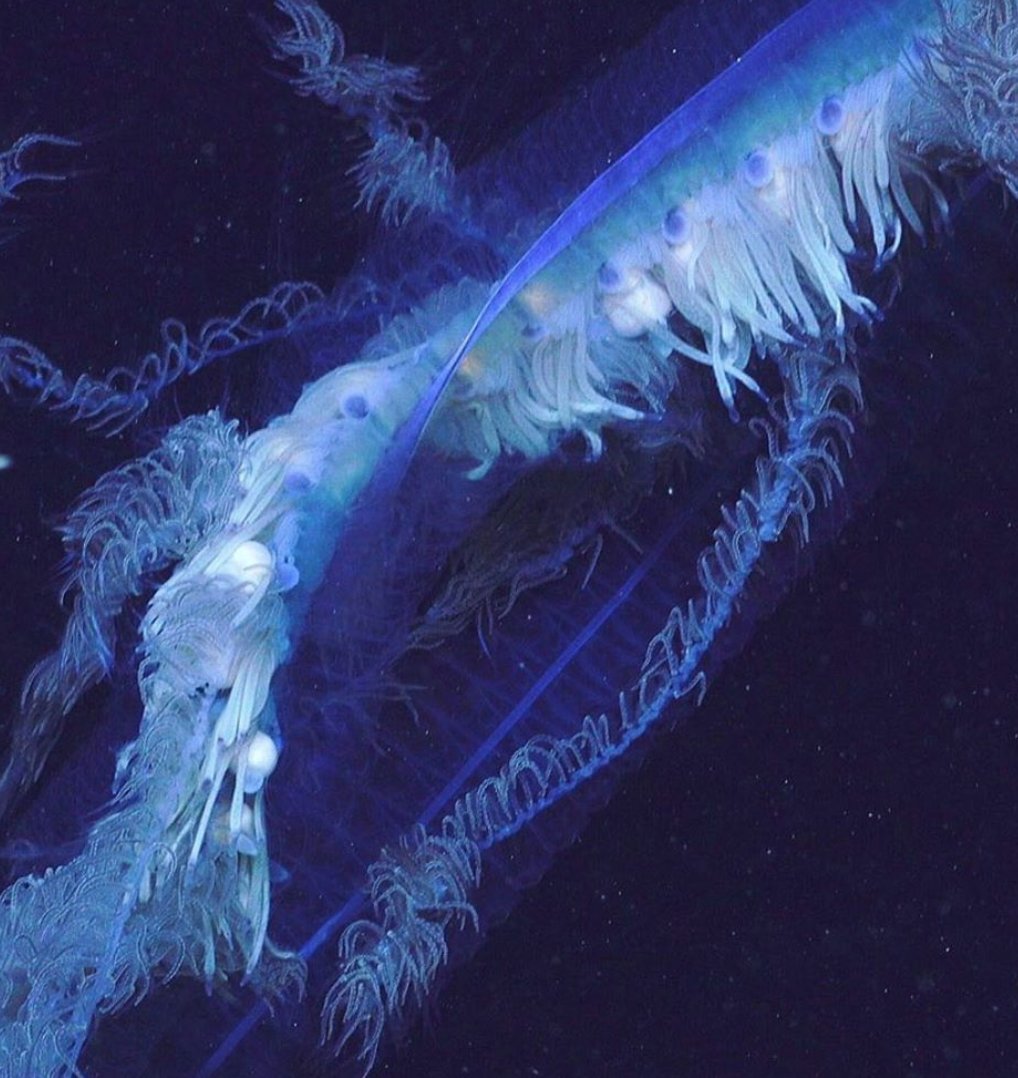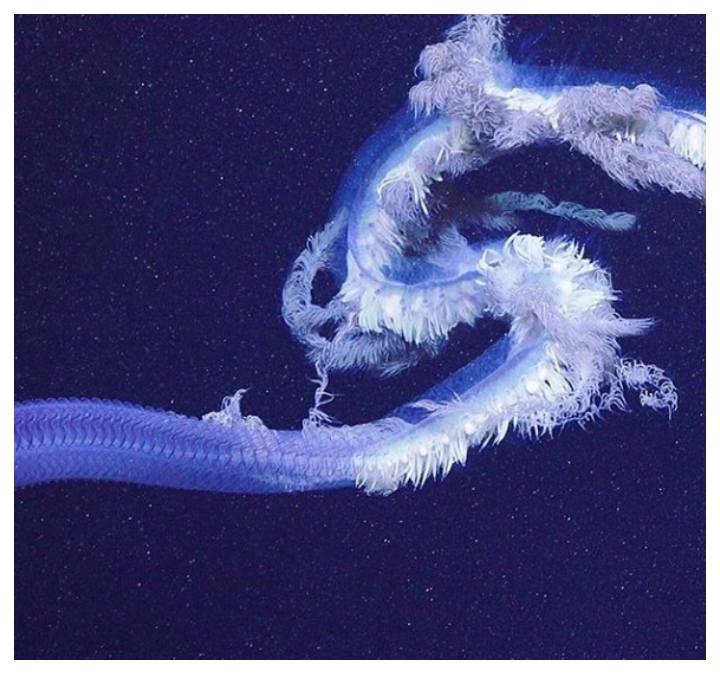Scientists call it a siphonophore Apolemia, but you can call it the world’s longest “long stringy stingy thingy,” the giant alien tentacle or just “the entity.”

An international team of ocean researchers says it may have discovered the longest living … thing … in the world, although the thing’s alien nature makes it hard to call it a single animal. It’s actually a giant colony of tiny, genetically identical clones that work together to create a larger, jellyfish-like predator in the deep sea.
The creature was spotted about 630 metres below the surface, in the darkness of the ocean’s depths.
Researchers at the Schmidt Ocean Institute shared footage of the largest siphonophore Apolemia specimen they’ve ever seen earlier this week, after recording it in a “UFO-like” feeding coil deep beneath the Indian Ocean west of Australia, in a region known as the Ningaloo Canyons.
“It seems likely that this specimen is the largest ever recorded,” the Schmidt Ocean Institute researchers wrote on Twitter.
They added that the outer ring of the ribbon was about 47 metres long, but they weren’t able to get a full measurement of the thing’s inner rings. Most of these things grow to be about 40 metres long in total, meaning this one is much, much bigger than normal.
“Everyone was blown away when it came into view,” biologists Nerida Wilson and Lisa Kirkendale of the Western Australian Museum told ScienceAlert. They were among several research groups on the expedition.
“It has yet to be formally measured,” they said. “However, it does appear to be longer than any other animal on the planet.”
The entity is truly massive in scale, but you’d never know it was made of tiny organisms if you saw it up close. The ribbon-like thing is about as thick as a broomstick, according to the Schmidt Ocean Institute, and it looks like a snake’s body with fur spilling out of one side. That “fur” is actually an assortment of tentacles meant for snaring small creatures.
The so-called entity is actually a massive ribbon of tiny ocean-dwelling organisms called zooids, which latch onto one another and clone themselves so they can act like one big, cohesive organism. The zooids become dedicated organs for the larger colony and spend their whole lives fulfilling a single function such as stinging prey, digesting food, moving around or reproducing.

Get breaking National news
“The whole thing looks like one animal, but it’s many thousands of individuals which form an entity on a higher level,” biologist Stefan Siebert of Brown University told Wired in 2014.
Siebert was talking about a smaller specimen at the time, but the Schmidt Ocean Institute shared his explanation this week as an apt way of describing their find.
Biologist Rebecca Helm, who specializes in studying jellyfish at the University of North Carolina Asheville, said the footage gave her “chills” on Twitter.
“This is an ANIMAL,” she wrote in a Twitter thread. “I’m guessing it’s over a hundred feet long, forming a spiral in the middle of the deep sea.
“I’ve gone on numerous expeditions and have never, EVER, seen anything like this.”
She added that the creature is remarkable because it appears to be hunting for food, rather than simply hanging out and snaring whatever passes by.
“A siphonophore colony in a line creates a curtain of deadly tentacles in the open ocean,” she wrote. “But in THIS case, the animal is hunting in a galaxy-like spiral.”
Humans rarely encounter siphonophores, although their “long stringy stingy thingy” nickname is well-earned from a handful of such incidents, according to the New Zealand government.
Many people marvelled at the deep-sea alien on Twitter.
“It doesn’t know that we exist,” one user said. “Trippy how many different worlds are on this planet!”
“Love this concept,” the Schmidt Ocean Institute wrote in response.
“Like AM and FM radio waves, passing each other in the same space, ‘unaware’ of the other’s existence.”










Comments